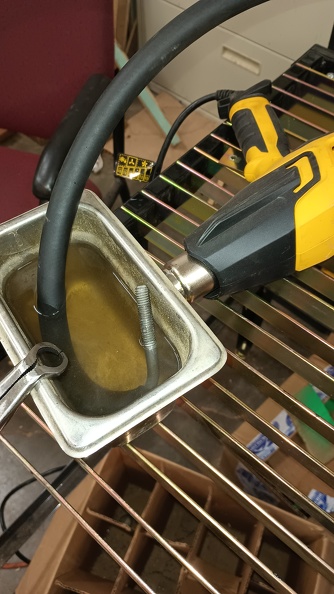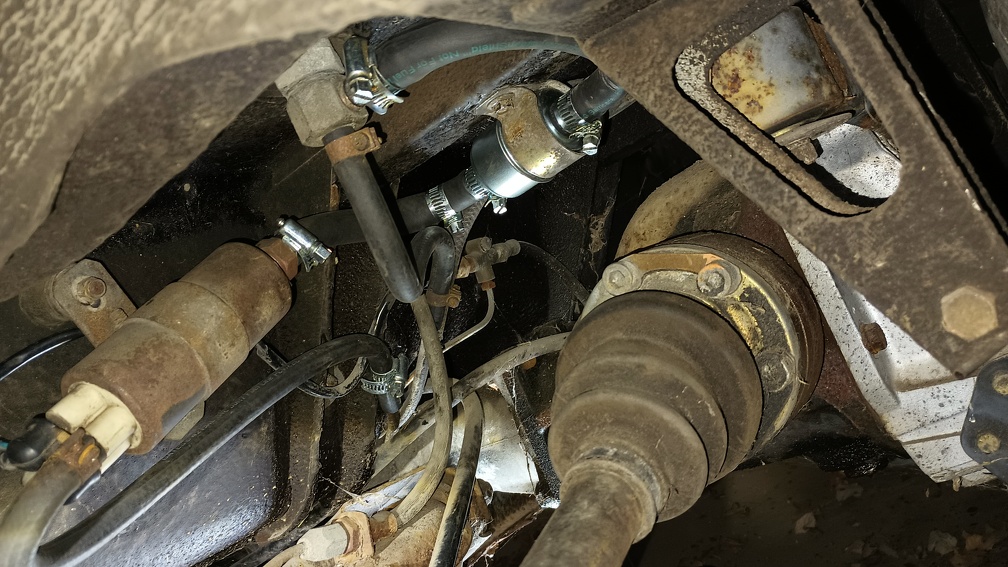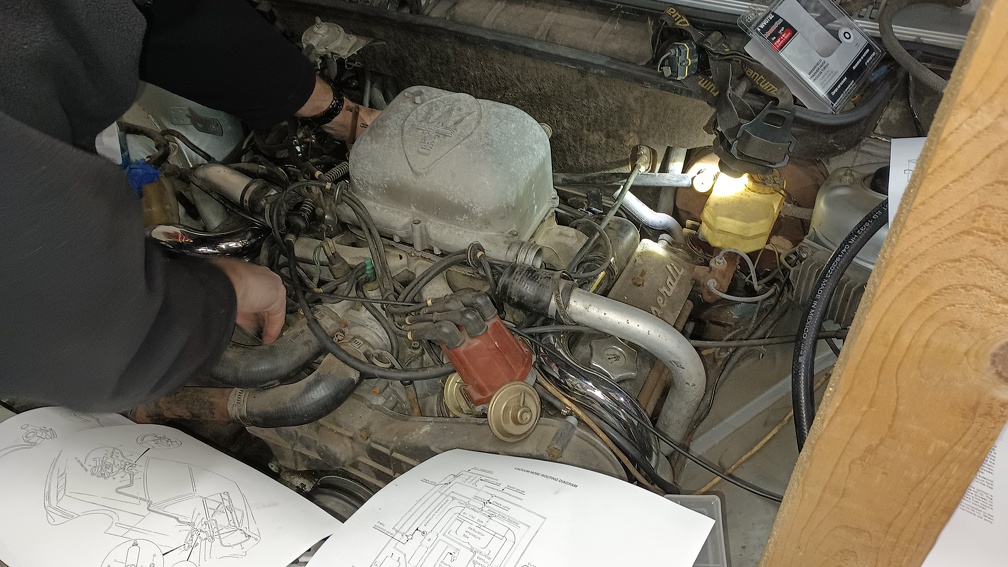We gathered around the temple of stupid on the day after Thanksgiving to potentially get the car in a position where we might try to start it. Very exciting. There were a handful of simple tasks that needed to happen first, but as you can probably imagine by now, with this car there’s no such thing.
Before the car could be fired, it’s going to need fuel. Step one was to finish putting the fuel fuel lines in place, mount the new fuel filter, and re-mount the old pump. In order to maintain clearance with the differential and the axles, the fuel pump/filter are packaged fairly tight with some pretty serious bends in the fuel lines. I assume that the official parts book would call for some molded fuel lines to fit in there, but this project doesn’t have the budget to pay Ferrari prices for fuel line. If they’re even available anywhere!
Following some advice that Tim found on the Internet, we decided to make our own molded lines using the freebie 1/2″ fuel hose that I got. We used the U-bolt out of an exhaust clamp to put a bend in the hose and then submerged the hose in water that we were boiling with a heat gun. Nothing sketchy about this at all!

It didn’t come out looking like a “real” molded hose, however, it did put enough of a natural bend in it that there is no longer a kink in the hose when it makes the turn necessary to clear all the various parts that could chafe it. After sorta-molding both ends of the hose, I had a new fuel hose that would clear everything without kinking. It took a little fiddling, but the new filter, old pump, and new lines were all hooked up.

We turned our attention to the vacuum lines under hood next.

Damn, there are a lot of vacuum lines under there! And it’s not all that well documented. We had these diagrams from the service manual to work with:



We quickly realized that the “Vapour storage carbon canisters” were long gone. The “Air flap valves” that appear in the last diagram as “B” were also nowhere to be found. The two outputs on diverter valve were teed together, and there were plenty of other missing and disconnected hoses.
Apparently the “Air flap valves” are part of the evaporative emissions control system. Because there would be fuel vapors in the carb box when the car was shut off, those flaps were in place to be held open by vacuum when the car was running and then snap shut when the car was off to keep the fuel in the carb box. So the good news there is that we don’t need to care about those at all and it sounds like it’s something that was just born to break anyway.
We decided that we’d hook up the vacuum lines that we absolutely knew for certain had to be there, and then we’d give it an attempt at a start. After connecting the jumpbox, we turned the key on to see if the fuel pump would come alive, and it did. Next, we put some fuel into the tank and turned on the key to see if we had any leaks. The fuel lines in the rear all stayed dry and we could see the fuel spraying in the carb when we worked the linkage. So far, so good. We got the fire extinguisher handy, the camera rolling, and…
All of a sudden there was absolutely no power in the car at all. No interior lights, no dash buzzers, no fuel pump, no nothing. the jumpbox still had power and there was good ground, but nothing else. It was getting a little late, so on that terrible disappointment we called it a night. Just a Maserati being a Maserati, I guess.
Coming back to the problem the next day resulted in a discovery that the issue wasn’t so much with the Italian-ness of the car, but the partially-disassembled state that it’s in. I poked around with a test light and couldn’t really find anything that jumped out at me, but the big clue came when I started noticing that when I opened the door, the oil pressure light came on. Sure, it could just be an Italian car doing Italian car things, but that seemed more like a bad ground somewhere. Looking at the engine compartment, the negative battery cable immediately disappeared under the intake manifold. So the engine was grounded, but the chassis wasn’t! There is a little bracket on the negative cable that is supposed to bolt to a stud along the inside of the fender. Once I bolted that down, all the electrics started working properly again. We must have been making incidental contact with something before and when we moved things around to get ready to start it, we broke whatever that contact was.
Now that the electrics seem to be sorted, I’ll wait for the next opportunity that the guys have to come over so we can attempt to see a Maserati Biturbo start and run.